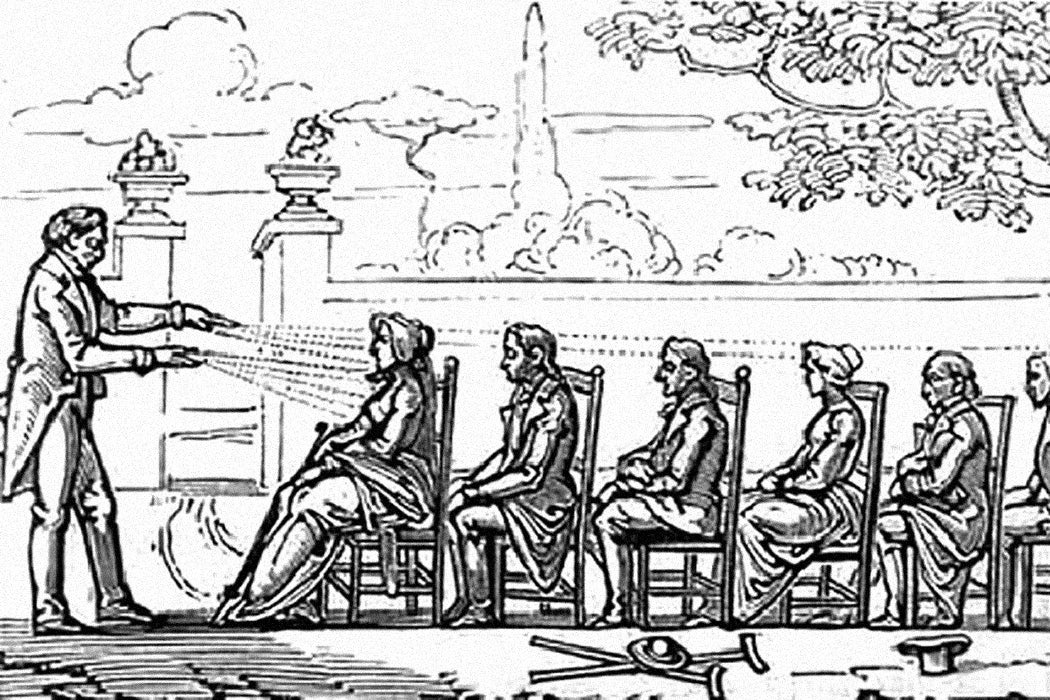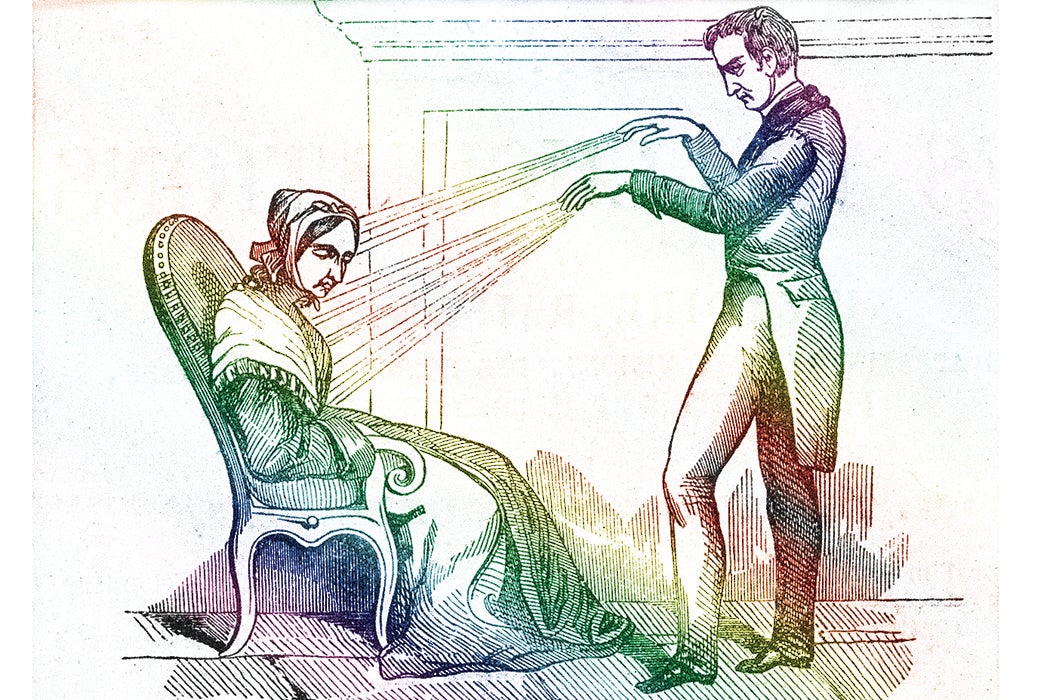Charles Poyen’s American lecture series wasn’t doing so well in the autumn of 1836. He wrote home for an infusion of sugar-plantation cash and then continued his tour into southern New England. Finally, he hit upon an eager audience: cotton mill owners intrigued with the idea he was hustling.
Poyen sold mesmerism as a form of management for the disciplining of labor. What scholar Emily Ogden calls the inauguration of a “whole strand of the American occult tradition” had the control of workers at its heart.
Ogden notes that much has been written about the radicalism of nineteenth century occultism. Seances and spiritualism helped foster feminist politics. Supernaturalists were in secret rebellion against the secular mainstream, giving birth to political alternatives as well as spiritual ones. But, as Ogden explains, the occult wasn’t necessarily progressive.
Mesmerists enchanted their subjects in order to manage them, using mesmeric thrall and clairvoyance in labor discipline. With the help of his demonstration partner, the factory worker Cynthia Gleason, Poyen showed the owners of American cotton mills how enchantment could impose order—a magic trick he had seen performed in both French hospitals and Guadeloupean sugar plantations.
Mesmerism, or animal magnetism, had its most famous practitioner in German doctor Franz Anton Mesmer (1734-1815). He said that manipulating the invisible, vital natural force that surrounded all life forms could both cure and control people. The controversial Mesmer never convinced many in the emerging sciences, but some medical practitioners took his teachings up, turning themselves into professional magnetizers. Poyen learned about it in medical school in Paris.
When Poyen arrived in Pawtucket, Rhode Island, he came on the heels of a technological innovation that had transformed New England industry. Water-powered looms, combined with slave-grown cotton shipped from the South, made the mill owners rich and powerful. But the laborers they had depended on before the power loom, children, couldn’t operate the new machines. They began employing young unmarried women instead. These “mill girls” were “a class the managers found more tractable.” Work went on for twelve to fourteen hours a day, six days a week.
The automation of the factory required the automation of factory workers, tuned to the factory bell.
Poyen’s lectures cost seventy-five cents, which was between one and two days’ wages for a mill worker. Weaver Cynthia Gleason, who became the country’s first mesmeric clairvoyant, couldn’t afford Poyen’s lectures. Instead, she became a part of the lectures after her physician, who was also an investor in a mill, introduced her to Poyen.
Even after a decade of working in the mills, “Gleason’s body failed to comply with the factory bell’s rhythms, so Poyen used animal magnetism to bring her back into line.” Magnetic somnambulism, an enchanted, hypnotic, or trance state, was the technique Poyen used in partnership with Gleason to make her “preternaturally punctual” for work.
Read this Next
The Mystical Practice That Preceded Medical Anesthesia
In France, nervous patients were considered the most susceptible to being mesmerized. In Guadeloupe, slaves—the owners hoped to magnetize them to ward off revolt. In New England, the mill girls. Each of these categories of people was considered more primitive, more controllable, more exploitable.
Weekly Newsletter
Of course, mesmerism/magnetism was never institutionalized in the factories, no matter the title of Poyen’s book, Progress of Animal Magnetism in New England. It was, after all, a magic act, a parlor trick. Other forms of enchantment, or punishment, would be explored to control workers.
Poyen returned to France in 1839. Gleason went solo into the clairvoyant business. Mesmerism, which Ogden describes as having first “arrived in the U.S. as the gift of one boss to another,” thrived as a pseudoscience and entertainment into the 1850s, before being “gradually absorbed into Spiritualism.”








